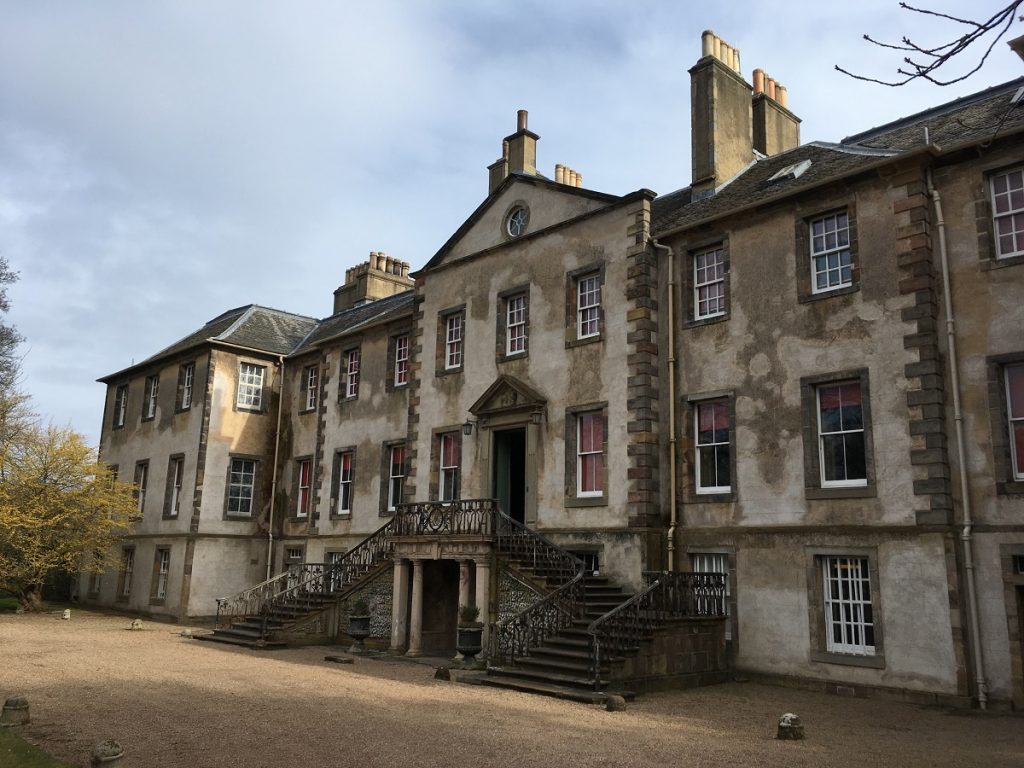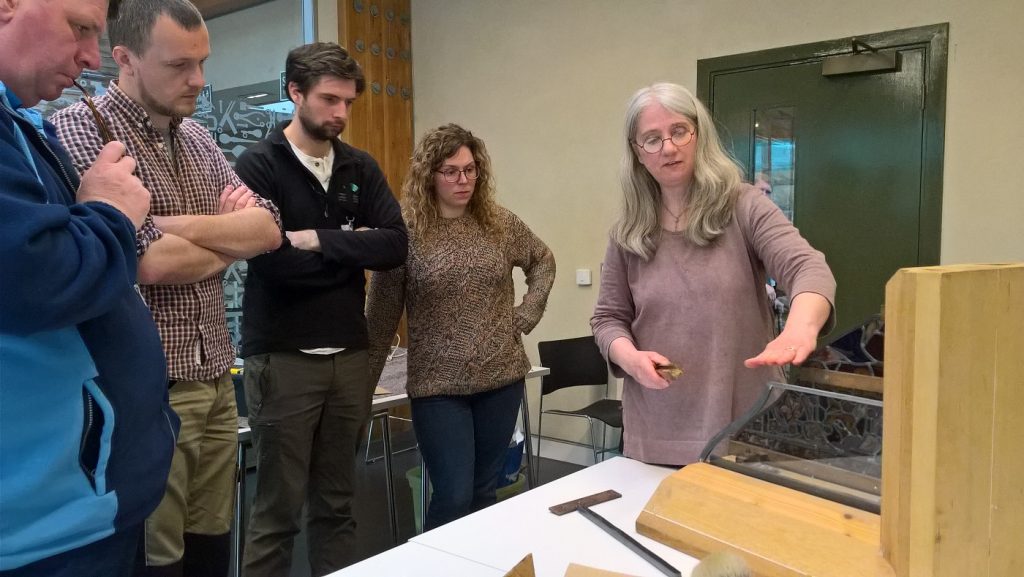Through the Looking Glass: Exploring Historic Glazing
Materials | Written by: Vanesa Gonzalez | Friday 7 December 2018

The Newhailes Estate, East Lothian
Glass has a colourful history and has been around for many, many years. As well as being functional, it can be beautifully decorative in many traditional buildings.
Ever since I was little, I was never able to make up my mind about what I wanted to be when I grew up. Now fast approaching a big birthday, I’m still not sure of the direction I want to go. But there is one thing I do know: I love buildings.
Being a building conservation geek, I was delighted to be able to go to our Historic Glass and Glazing Conservation course. I’ve had an interest in the topic for years, and so this was the perfect opportunity to learn more about it! Here’s what I discovered…
Architectural glass and glazing
The first part of the course was delivered by industrial historian Robin Murdoch. I don’t think that there are many people in Scotland, and maybe beyond, with as much knowledge on this material. The fully-booked class was small enough to allow for a very interactive lecture.
The presentation was incredible, using a high-tech screen and paper handouts for further reading. Robin explained what glass is, including the science bit, in a really accessible way.
He then moved onto the history of glass, which dates back to around 3000BC – who knew?! In that time, glass has been through many changes. In fact, the type of glass you’re likely to see being used in buildings today wasn’t made until 1959.
By the end of the morning lectures we had learned about historic production methods including cylinder, crown and cast plate, and the history of glass production in Scotland. For example, did you know that you can identify the production method by looking closely at the glass? You can also date your sash and case windows by looking at the width of the timber and the size of panes!
To finish off, we looked at the evolution of windows.
Exploring a hidden gem

The inside of the Northern Glass Cone, Alloa
We also went on two site visits. The first visit took us to nearby Alloa to a glassworks factory. We were lucky enough that one of our fellow students used to work there and knew about a hidden gem: the Northern Glass Cone. This c.1825 glass cone, a brick-built glass furnace that used coal, is the only surviving example in Scotland, and it was right on our doorstep.
The next day we went to the stunning Newhailes Estate in East Lothian. Architect Mark Hopton gave us a tour of the site and explained in great detail (along with Robin), the restoration work that was carried out on the building when it went into the care of the National Trust for Scotland (NTS). This really put all the theory we learnt into context, being able to see in situ the different examples of glass and interpret the development of the building by looking at the windows.
We learned that you can tell a lot about a building from looking at the windows. For example, did you know that in Scotland windows tend to be recessed into the building, whilst in England they tend to be flush with the façade?
In England, the windows were part of the main construction, and therefore are encased within the masonry. In Scotland the building fabric would go up first and then they would fit the windows to the openings.
Stained glass

Glass workshop with Linda Cannon
The second part of the course looked into decorative glass. The sessions were delivered by Linda Cannon, an expert with an international reputation. This time the content was split into four parts: a lecture covering all the theory, the development of stained glass and its conservation; a hands-on workshop and a site visit to the impressive National War Memorial in Edinburgh Castle.
My favourite part was, of course, the hands on workshop. Linda showed us how to cut glass, mix and apply paint (which she then fired in her own kiln in her studio) and to set all the parts together with lead to form our very own little stained glass window!
Reflections
I found the course to be excellent. From the high calibre of the teaching, to the exclusive site visits and the hands-on workshop, everything was carefully planned. The content is the same that the full-time students get, so you don’t feel like you are missing out on anything. The only difference is that if you have formally enrolled to get a qualification, you will need to do an assignment afterwards to demonstrate your learning. For the rest of us, we get a lovely little certificate to put on our wall which counts towards your annual Continued Professional Development (CPD).
About the author:
Vanesa Gonzalez
Vanesa was the Engine Shed's Content Manager until 2019, overseeing everything from technical publications to engaging exhibitions for visitors to the Engine Shed. Vanesa has since moved onto a new role within Historic Environment Scotland.
View all posts by Vanesa Gonzalez



